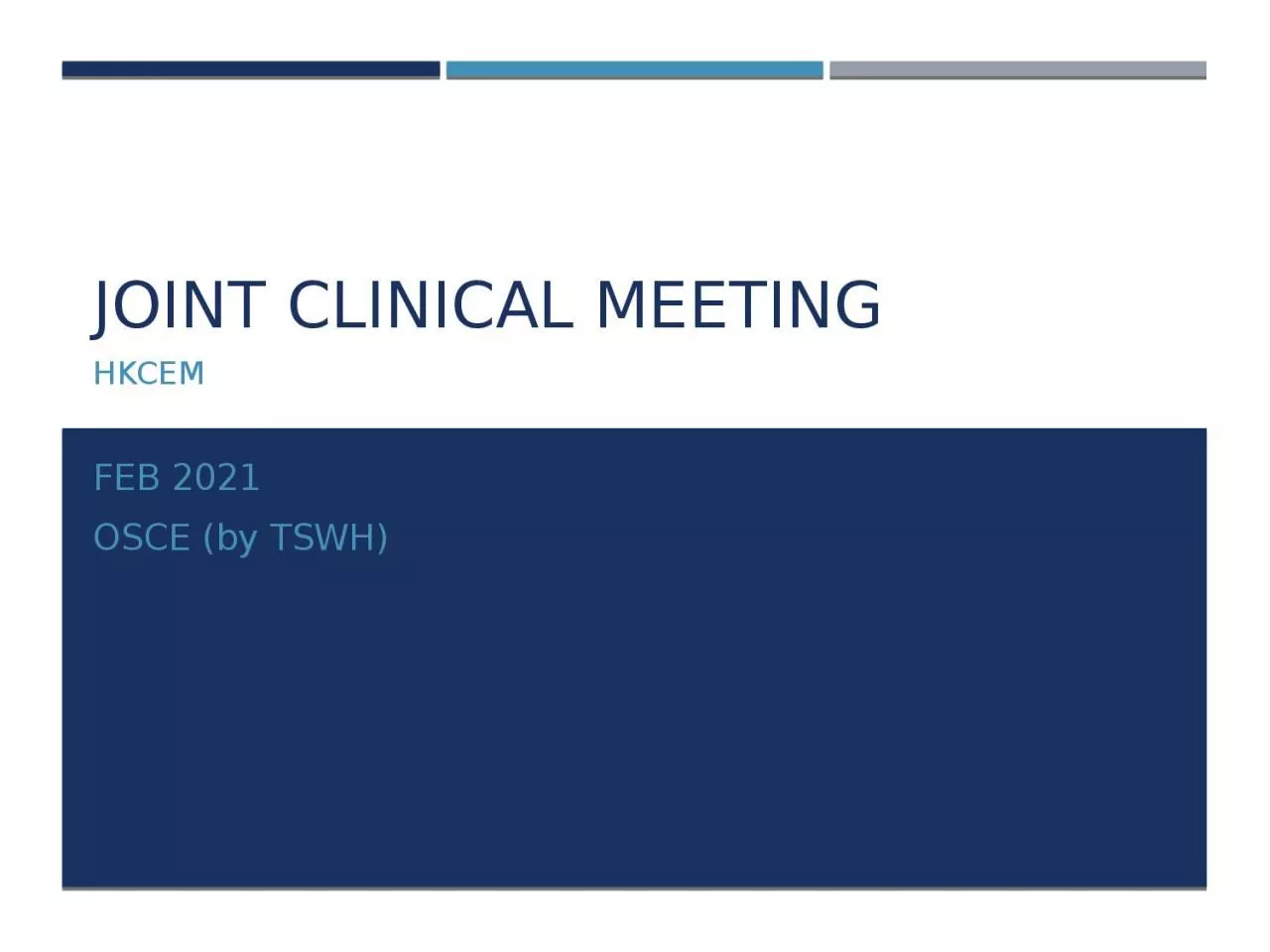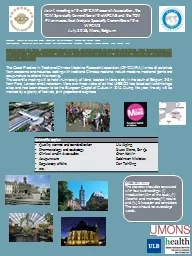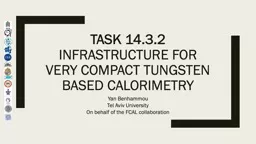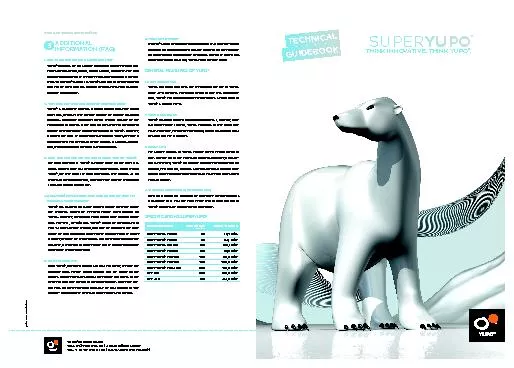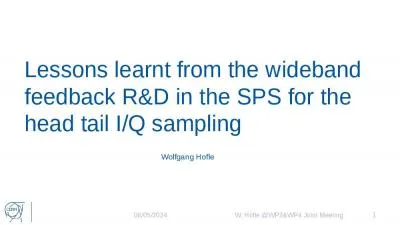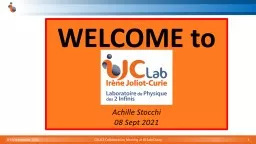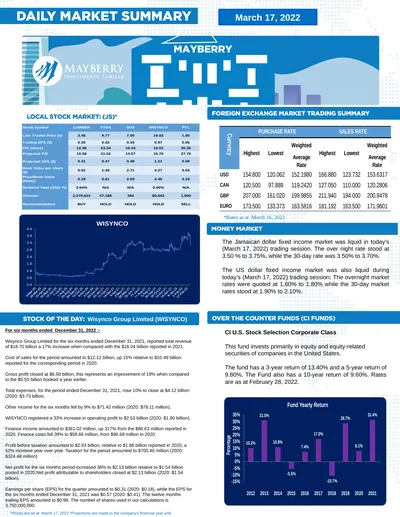PPT-Joint clinical meeting Feb 2021
Author : eleanor | Published Date : 2024-03-15
OSCE by TSWH HKCEM Question 1 A middle aged man presented with sudden onset crushing chest pain since 1 hour before AampE attendance Where is the likely culprit
Presentation Embed Code
Download Presentation
Download Presentation The PPT/PDF document "Joint clinical meeting Feb 2021" is the property of its rightful owner. Permission is granted to download and print the materials on this website for personal, non-commercial use only, and to display it on your personal computer provided you do not modify the materials and that you retain all copyright notices contained in the materials. By downloading content from our website, you accept the terms of this agreement.
Joint clinical meeting Feb 2021: Transcript
Download Rules Of Document
"Joint clinical meeting Feb 2021"The content belongs to its owner. You may download and print it for personal use, without modification, and keep all copyright notices. By downloading, you agree to these terms.
Related Documents

